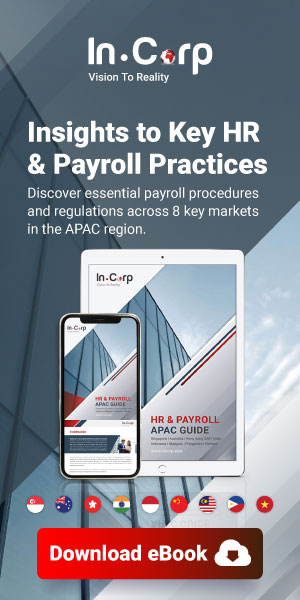According to the Global Reporting Initiative (GRI), Sustainability Reporting is an overview of a company’s economic, environmental, and social impacts, caused by its everyday activities.
This kind of reporting involves presenting the company’s commitment to a sustainable global economy and can help organisations measure, understand, and communicate their economic, environmental, social, and governance performance, and then set goals, and manage change more effectively.
In recent years,
sustainability reporting in Singapore has become a very important part of Integrated Reporting, which combines financial and non-financial parameters. General terms synonymous with sustainability reporting include triple-bottom-line reporting and corporate social responsibility.
Varying from company to company, the specific purpose of a sustainability report might include:
- Addressing stakeholders beyond those targeted by the integrated report (financial capital providers);
- Details on the organisation’s competitive positioning in the emerging sustainability space;
- A more detailed overview of organisational initiatives relating to social, human, and natural capital.
Why is Sustainability Reporting Important?
The value of sustainability reporting is that it ensures organisations consider their impacts on sustainability issues and enables them to be transparent about the risks and opportunities they face.
In today’s world, it is insufficient to simply make claims about your level of sustainability. Now, organisations need to provide tangible, credible demonstrations of their level of sustainability by following proper guidelines for sustainability reporting.
This way, organisations build trust among customers and all stakeholders, which in turn directly impacts the bottom lines. As per the business axiom – you can’t manage what you can’t measure; transparency is a currency that builds trust, which build businesses.
So in a nutshell, sustainability reporting can have four major benefits to any organisation:
- It is a useful risk management tool.
- It can help generate savings.
- It helps in better decision-making.
- It helps in increasing stakeholder trust.
Sustainability Reporting as a Tool for Better Risk Management
Some have argued that sustainability reporting and risk management are actually ‘two sides of the same coin’. Considering risk and sustainability together is noteworthy, as sustainability, in grand, strategic terms, is about realising business resilience and an opportunity to enhance transparency and partnership.
Sustainability shapes a business’ future operating environment, its corporate perception, and brings resilience and efficiency into the business.
In simpler terms, both enterprise risk management (ERM), and sustainability reporting are functions primarily focused on the identification and prioritization of risk, with primacy on internal reporting, external disclosure and transparency. In fact, sustainability reporting can be thought of as a first among equals in terms of the mitigation strategy.
Moreover, sustainability reporting has become important tool in better risk management with modern businesses – in addition to the traditional risks – increasingly facing social and environmental risks, which manifest themselves over a longer term, are largely outside the organization’s control, and often affect the business on many dimensions.
Managing such risks require making investment decisions today for longer-term capacity building and developing adaptive strategies; and a good sustainability report helps in that.
Sustainability Reporting Improves Operational Efficiency Too
Few decades back, it was still believed that
profits and sustainability were mutually exclusive. That conventional wisdom has now reversed, with companies realizing significant cost savings through environmental sustainability-related operational efficiencies.
Investors too are increasingly correlating better financial performance with better
ESG (environmental, social and governance factors) performance. This so as evidence is mounting showing that sustainable companies deliver significant positive financial performance.
In fact, the 2015 EY Global Institutional Investor Survey of over 200 institutional investors showed they are increasingly using companies’ non-financial disclosures to inform their investment decisions.
A study by IssueLab, a non-profit think tank which studies social impacts of initiatives, noted that companies with strong corporate responsibility reputations experience no meaningful declines in share price compared to their industry peers during financial crises.
For example, a survey by A.T. Kearney revealed that during the 2008 recession companies committed to sustainability practices achieved “above average” performance in the financial markets, translating into an average of US$650 million in incremental market capitalisation per company. The survey called them “Green Winners”.
Thus, nowadays, most companies creating value through sustainability, look first to improving returns on capital, which often means reducing operating costs through improved natural-resource management (such as energy use and waste).
Companies are also driving down costs by systematically managing their value chains. Moreover, companies are adding value by improving employee retention or motivation through sustainability activities or by raising prices or achieving higher market share with new or existing sustainable products.
All these mean improved operational efficiencies.
Reporting Framework of Sustainability Reporting
Sustainability disclosure – a part of sustainability reporting – provides a broader view of a company’s performance than financial disclosure alone.
When used in integrated reporting, it can reveal value creation across six capitals: financial, manufactured, intellectual, human, social and relationship and natural.
Over 90% of the world’s largest companies are already reporting on their sustainability impacts, with smaller companies following suit.
The majority decide to report using the GRI Standards, which provides a comprehensive, flexible and adaptable framework for companies of any size to report on their economic, environmental and social impacts.
Conversely, some have chosen to follow the methodology recommended by the International Integrated Reporting Committee (IIRC), and US-based Sustainability Accounting Standards Board (SASB).
In effect, whether to choose GRI, IIRC, or SASB standards, depends on the organisation’s ultimate goal.
GRI and IIRC Collaborate
Organisations can struggle to navigate the sometimes confusing landscape of sustainability disclosure, whereby numerous frameworks and standards exist. To simplify this, GRI and the IIRC collaborated to help clarify how companies can use both the GRI Standards and the IIRC frameworks in their integrated reporting. The collaboration provides insights into value creation across the six capitals (financial, manufactured, intellectual, human, social and relationship and natural) and drive transparency.
So, What to Choose?
Established in 1997, GRI developed the first corporate sustainability reporting framework. Today, GRI’s standards are used by the majority of companies reporting sustainability information, and provide information to a wide variety of global stakeholders ranging from civil society to investors. Typically, companies use the GRI standards to develop and design their sustainability or corporate responsibility reports, as they include a very broad scope of disclosure.
SASB, meanwhile, was established in 2011, and develops standards for the disclosure of material sustainability information to investors in mandatory filings (financial disclosures). SASB standards, are available for 79 industries, and identify material sustainability factors that are likely to impact financial performance. So primarily, SASB standards are targeted towards investors.
This so because investors have their own unique needs, different from those of suppliers, customers, communities, interest groups and other stakeholders. What investors need and demand is a reliable and comparable sustainability information with clear links to financial performance.
Focused on this need, SASB standards identify the subset of sustainability issues that are reasonably likely to be material to investors. Thus, in order to preserve a focus on financial materiality as well as to attain comparability among peers, SASB standards are industry specific.
To summarise, GRI and SASB are intended to meet the unique needs of different audiences. The GRI standards are designed to provide information to a wide variety of stakeholders and consequently, include a very broad array of topics. SASB’s are designed to provide information to investors and consequently, focus on the subset of sustainability issues that are financially material.
So, on the question of which framework to choose?
The answer is that truly sustainable companies should do both. They should identify sustainability impacts that are financially material (and must be disclosed to investors), as well as the impacts relevant to a broader range of stakeholders.
The bottom line is that these standards are not mutually exclusive; they are mutually supportive.
Need Help With Sustainability Reporting in Singapore?
All the above shows that sustainability reporting is now mainstream. Companies and organisations can no longer view it as a “nice to have” function separated from the “real” business.
Thus, making sustainability reporting a part of your core business strategy in Singapore will help drive innovation, better mange risks, improve operational efficiencies, and will garner loyalty from employees, customers, suppliers, communities and investors.
Talk to us to discover more about starting a sustainable business!
About the Author
InCorp's content team includes talented copywriters from our regional group and globally. We contribute informative, thought leadership, and market-trending articles to guide aspiring business entrepreneurs to a higher level across the Asia-Pacific region.
More on Singapore Guides


